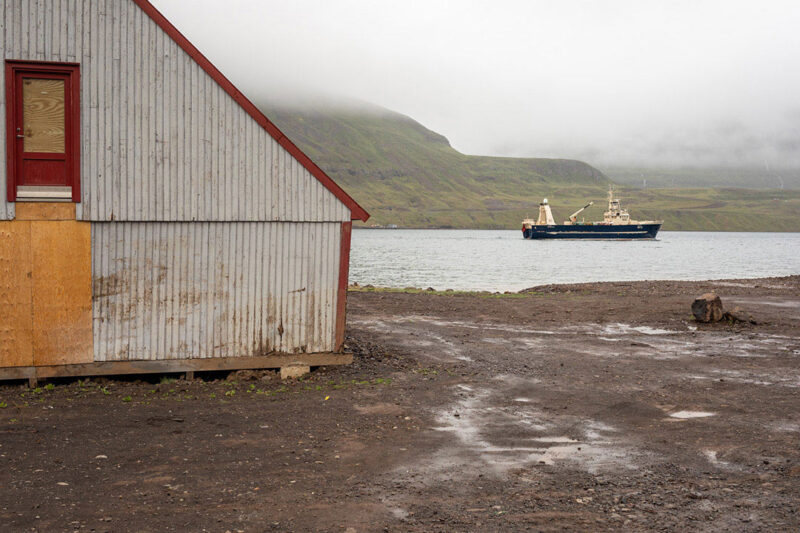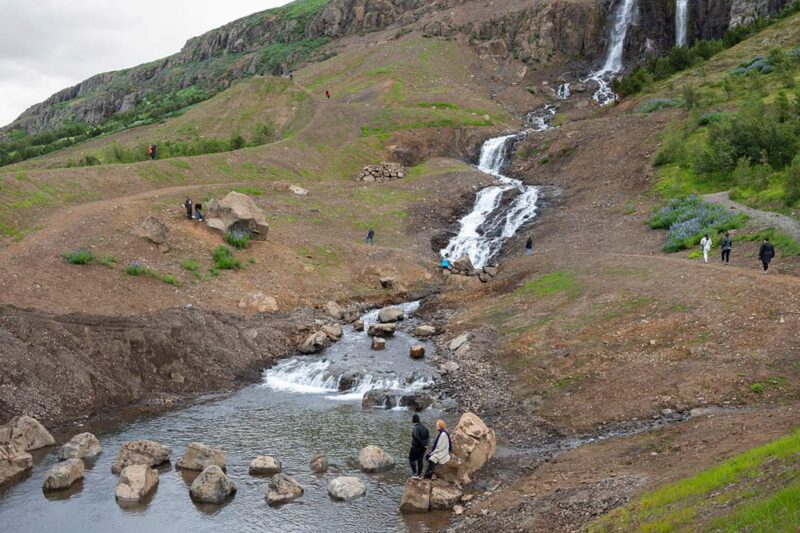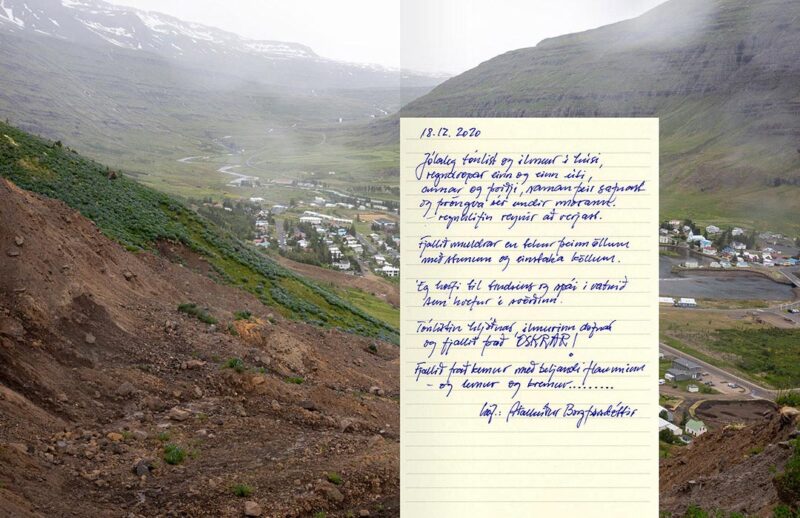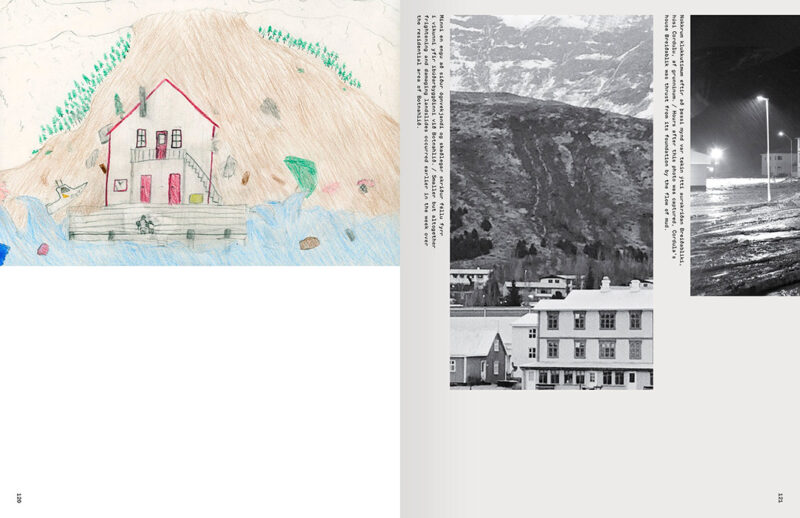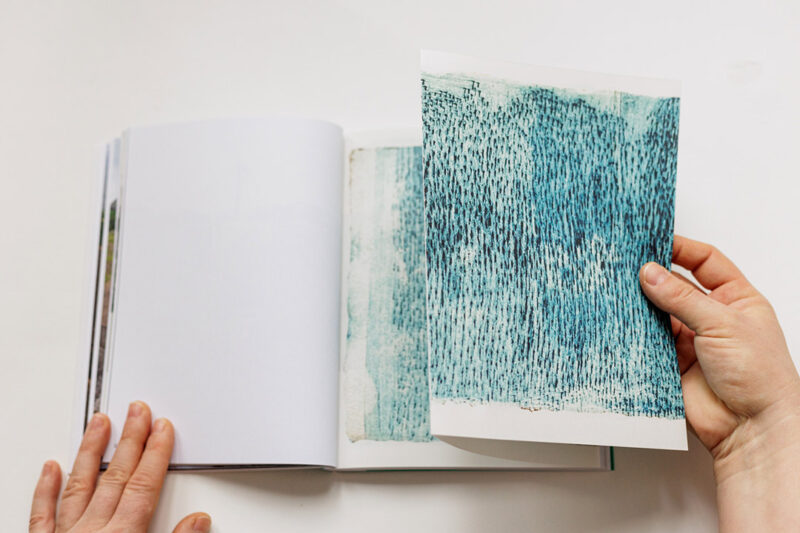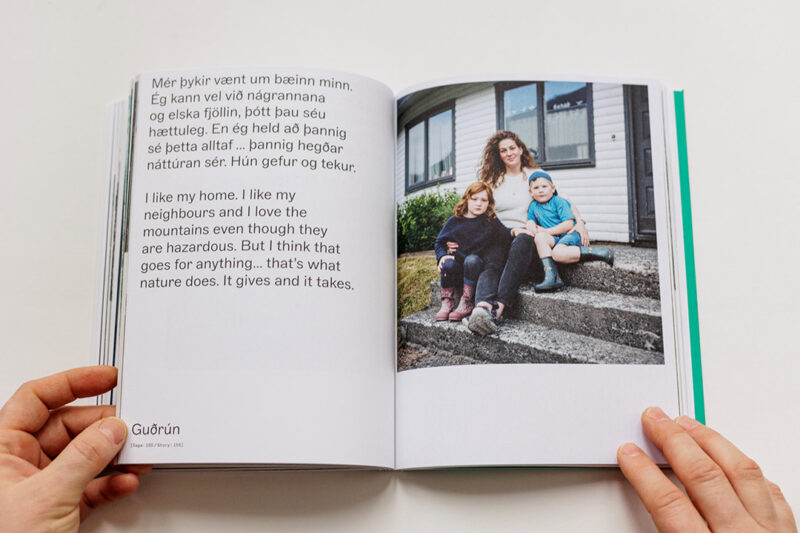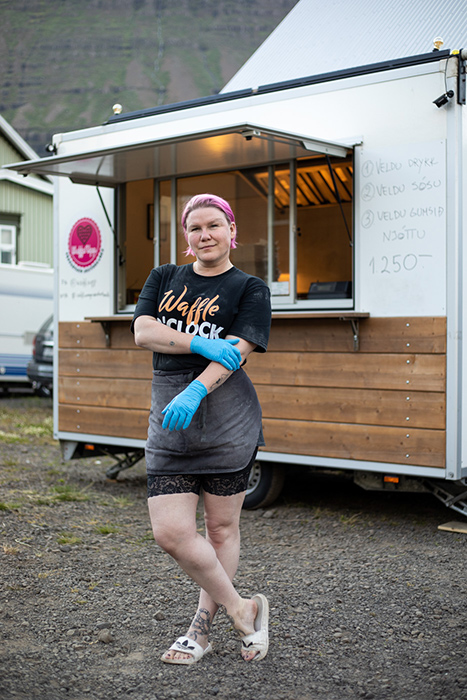[December 13, 2023]
By Louis Perreault
“Nína, who was leaving the local grocery store at that moment, experienced the sound of the landslide as ‘visceral,’ like a primal moan emanating from the earth.” It was late December 2020 and raining prodigiously in Seyðisfjörður, a small port town perched near the lip of a fjord in eastern Iceland. The water in the Búðareyrarfoss falls was no longer clear, as the earth, slowly sloughing off the surrounding mountains, was swept into its constant flow. In this part of the world, where, so late in the year, one would expect snow, the anxiety ratcheted up. In the darkness of late afternoon, Nina and her fellow citizens would experience one of the greatest upheavals the region had seen in many decades: a devastating landslide wreaked havoc, destroying thirteen buildings and the Technical Museum of East Iceland.

Skriðusögur (The Landslide Stories), Matjaž Rušt, Katja Goljat, and Jessica Auer, with texts by Pari Stave, Kristjan Torr, Jessica Auer, and Zuhaitz Akizu, Strandarvegur, Iceland, Ströndin Studio, 2022, 160 pages, softcover with flaps, glued binding, several pages of varied dimensions inserted, 17 x 22 cm
Skriðusögur (The Landslide Stories) tells the story of these events through descriptions by and portraits of the inhabitants of Seyðisfjörður, recorded and captured by the Slovenian photographers Matjaž Rušt and Katja Goljat and by Canadian artist Jessica Auer – founder, with her spouse, Zuhaitz Akizu, of Ströndin Studio, a local organization dedicated to the practice and teaching of photography. The book immerses us in the detailed accounts given by the people photographed, while highlighting the nightmarish impact of such an event.
The photographers’ approach is relatively simple, favouring a faithful representation of individuals over a flashy layout or formal treatment, yet the graphic design is bold and filled with visual surprises. At first, it follows a simple structure: double-page spreads pairing a portrait and a short personal account of the consequences of the landslide on the individual’s life. Then, dispersed through the book, we find inserted pages of different sizes, which take us into a sort of peripheral narrative. An exchange of text messages, a handwritten note, a child’s drawing, a long painting deployed over three recto-verso pages: each of these additions leads us into personal and private wanderings through the catastrophe, making us feel fright, or pain, or the memory that marked the creators’ imaginations. Provided by residents of Seyðisfjörður, these elements testify to the project instigators’ desire to create a work with and for the community.
As the effects of climate change are being felt with increasing vehemence, this book reveals the destructive power of natural disasters without necessarily resorting to shocking imagery, as media outlets tend to do. Skriðusögur (The Landslide Stories) shows the suffering caused by the landslide, but it also pays tribute to the resilience and courage of those who suffered its repercussions. The ingenuity deployed in the book’s layout denotes the artists’ desire to find new ways of talking about contemporary issues related to environmental transformations by avoiding the ambient catastrophism to convey the idea that creativity is an effective avenue of engagement. With its ambitious construction, the book demonstrates that new ways of recounting global transformations must be devised to attend to the fundamental changes that societies will soon have to face.
This publication is added to the already rich program that Ströndin Studio is proposing to develop. Welcoming artists from all over the world, Auer and Akizu provide support for diversified practices: “Our cultural and educational aims are to develop an understanding of the surrounding environment and place emphasis on how we engage with people, places and art-making.”1 The studio, which offers a residency program and workshops focused on different analogue photography techniques, has established durable ties with the small town of Seyðisfjörður. Although I sincerely hope that further opportunities for Ströndin Studio to present Icelandic natural and social landscapes to the world will not be so tragic, I will be interested to see how, in the future, it develops projects drawing material from local experiences to address global issues, from subjects related to the environment to more general ones dealing with our singular and changing relationship with nature. Translated by Käthe Roth
Louis Perreault lives and works in Montreal. His practice is deployed within his personal photographic projects and in publishing projects to which he contributes through Éditions du Renard, which he founded in 2012. He teaches photography at Cégep André-Laurendeau and is a regular contributor to Ciel variable, for which he reviews recently published photobooks.

